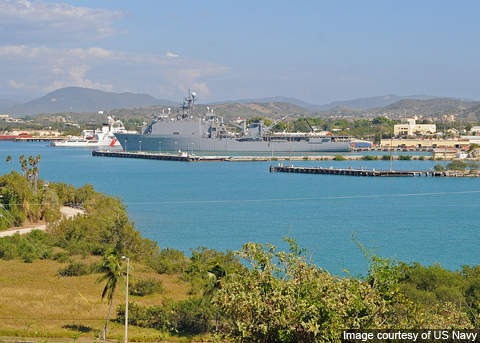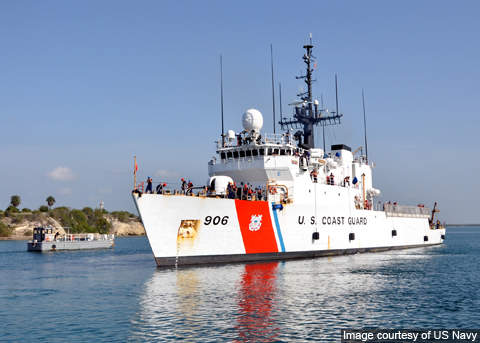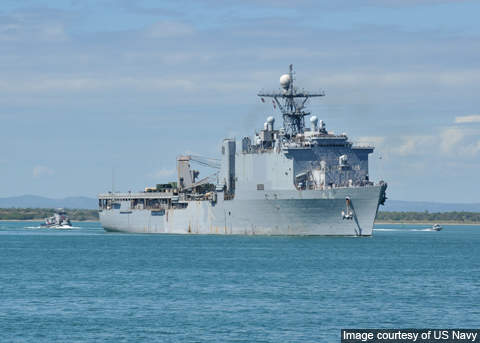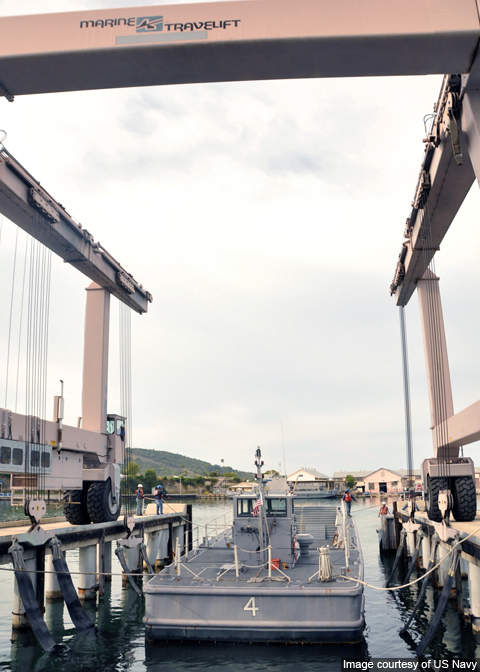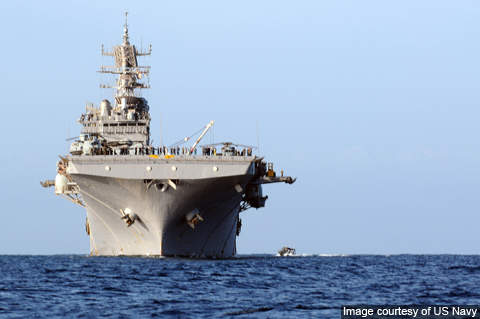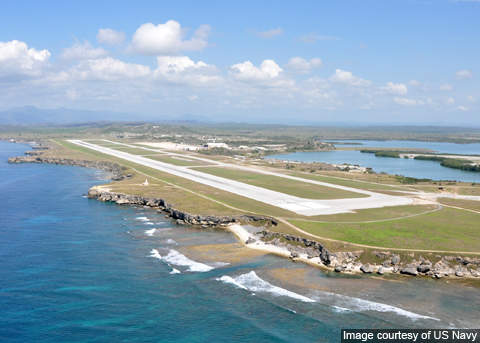US Naval Station Guantanamo Bay (NAVSTA GTMO) is the oldest US Navy base located outside the continental US. Situated on the south-east coast of Cuba, the base is about 500nm away from Miami, Florida. The naval station provides logistics support to the US Navy and Coast Guard ships and aircraft, as well as to the Joint Task Force-Guantanamo units.
It is the only US naval station existing in a country that does not have diplomatic relations with the US. The station has been hosting the Detainee Mission of the War on Terror since the 11 September 2001 terror attacks. The base has a current population of about 8,500.
Location and layout
Guantanamo Bay is located in the Oriente Province on the south-east corner of Cuba. The base is accessed through the Windward Passage from the north or through the Caribbean Sea from the south. The 12 mile-long pouch-shaped bay extends from the north-east to south-west. It is camouflaged by the Cuzco Hills on the south and east, and by mountains on the north.
NAVSTA GTMO history
In February 1903, the US Government leased 45 square miles consisting of land and water at Guantanamo Bay to set up a coaling (fuelling) station. A treaty was finalised and the agreement was signed by the US and Cuban governments in December 1903.
A new treaty signed in 1934 reaffirmed the lease and allowed Cuba and its trading partners to freely access the bay. It also added a condition that termination of the lease requires consent of both the governments, or the US would have to desert the base.
Relations between US and Cuba were unaffected until the Cuban Revolution in the late 1950s. In June 1958, the Cuban rebel forces captured 29 Sailors and Marines, and detained them in the hills as hostages until they were released after 22 days.
In January 1959, Cuban territory outside the limits of the naval station was declared off-limits to US on-duty members and civilians. In October 1962, the base’s employees and their family members were evacuated to the US amidst the tension of the Cuban Missile Crisis.
In February 1964, the Cuban government cut off water and supplies to the base in retaliation for a fine imposed on Cuban fishermen by the US Government for fishing in Florida waters. The base has been operational with its own power and water sources for over 40 years.
In 1991, the station accommodated around 34,000 Haitian refugees. In May 1994, Operation Sea Signal began and the base supported Joint Task Force 160 which provided humanitarian assistance to thousands of Haitian and Cuban migrants. Additional housing units were built to accommodate up to 60,000 migrants.
The naval station has continued its migrant assistance mission after Sea Signal. It also took part in Operation Marathon in October 1996 and Present Haven in February 1997, both of which involved prevention of Chinese migrants being trafficked into the US.
In July 1995 Fleet Training Group, Guantanamo’s largest tenant command, was relocated to Mayport after 52 years of service. The other major tenant command, Shore Intermediate Maintenance Activity was also decommissioned after 92 years of service.
Naval Station Guantanamo Bay operation
NAVSTA GTMO provides assistance and services to the US Navy and US Coast Guard ships as well as other foreign naval ships operating in the Caribbean Sea. It also supports the fleet participating in the narco-terrorism operations. It launches migrant operations to provide shelter for Haitians and Cubans. It supports joint operations though it is not a joint operations command.
The base hosts numerous tenant commands including the Southern Command Joint Task Force-Guantanamo, Joint Task Force Guantanamo, US Naval Hospital and Branch Dental Clinic.
Other detachments located at the base are: Personnel Support Activity, Naval Atlantic Meteorology and Oceanography Command, Naval Media Center, Naval Communications Station, Department of Defense Dependent Schools, Navy Brig, and Fleet and Industrial Supply Center.
NAVSTA GTMO garrison facilities
The bay area is divided into two parts known as the outer and inner harbours. The inner harbour includes commercial ports while the outer harbour accommodates naval station and the main anchorage space. Pier and wharf facilities are located at the small inlets located between Corinaso Point and Deer Point.
Air facilities
NAVSTA GTMO had two airfields namely Leeward Point Field and McCalla Airfield. The operations at McCalla Airfield were ceased in 1976. The Leeward Point Field is the only active military airfield in the base. It has a single runway (10/28) measuring 2,438m x 61m and surfaced with asphalt.
Other base facilities and services
The naval station has four wind turbines generating 3,800kW electricity, enough to fulfil 25% its power requirements. A desalination plant capable of producing 2.25 million gallons of fresh water a day is attached to the base. The plant also produces a combined 15,000kw of electricity through its two turbine generators.
Family and bachelor housing units are provided for marines and their family members. Other facilities include a child development centre, Commissary, Navy Exchange, gas station, youth centre and schools. Sports / recreational facilities include a nine-hole golf course, an 18-hole miniature golf course, tennis courts, batting cages and three swimming pools.

